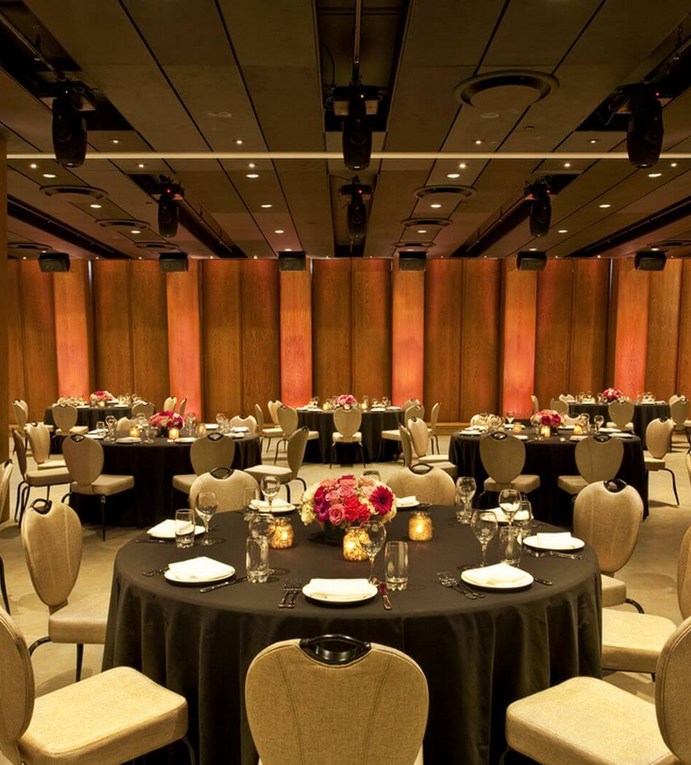With hotels seeking new ways to capture the lucrative business segment, up-to-date event spaces are no longer a nice perk, but a necessity. Depending on what demographic it wants to capture, a hotel’s event spaces can vary widely, from formal conference rooms with air walls to multipurpose spaces that can be closed off or opened up as needed.
“The event industry is always emerging and changing, and that makes it both exciting and enticing to remain relevant,” said Joseph Cervasio, director of event operations for the Dream Downtown in New York City. Cervasio worked on the redesign of the Gallery, which opened last year as the hotel’s new event space. “Event spaces don’t always have to be the biggest, they just need to make sense to clients. The space itself needs to be inviting to all types of events and guests. You need to have the tech-reliability that corporate clients look for and the gracefulness that social clients are in search for. Everything has to make sense; every element needs to equate to one another and not overshadow each other.”

Technology, of course, presents both a great opportunity for hoteliers to show off how up-to-date they are—and a headache for designers to anticipate future demands. “We’re really being careful and cautious to figure out where we’re going in regards to technology,” said Melinda Clark, project director at Dallas-based Wilson Associates. While outlets and jacks should be easily accessible, the growing expectation of wireless connectivity is presenting new challenges. “Everybody has Wi-Fi now, and everybody is using mobile devices, laptops and high-definition screens—there could be multiple screens,” Clark said. “Wireless capabilities offer improved freedom for layouts, she said, as long as the bandwidth can accommodate multiple devices from multiple attendees. “The most important thing is to have those connections that you can count on. Make sure those are all working so that everyone can connect, and that you don’t see any lull in connectivity.”
Lesley Hughes Wyman, principal and co-owner at MatchLine Design Group in Dallas, said that her team works with electrical consultants from the beginning to see how much can be wireless and how much can be hidden from guests’ eyes. Panels that blend in with the walls can hide speakers or other electrical components, while “floating” ceilings can hide all of the tech elements above guests’ heads so that they only see an elegant space without any visible wires or speakers.
The ability to keep these elements hidden is vital, Wyman said. Because event spaces in hotels can host any number of events, they need to be appropriate for everything from a wedding to a cocktail reception to a small gathering to a huge trade show. “We have to please everybody,” she said. “We try to keep the palette neutral and we need to really pay attention to lighting. That’s a key element. The spaces need to have seamless lighting with LED configuration and with a sound system.” Often, she said, the hotel with the highest-end technology will win the bid for an event.
